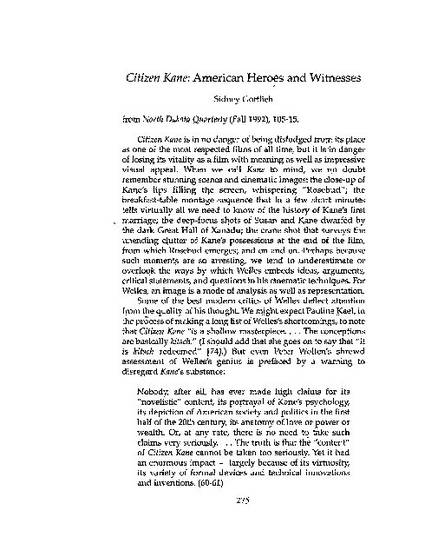
Citizen Kane is in no danger of being dislodged from its place as one of the most respected films of all time, but it is in danger of losing its vitality as a film with meaning as well as impressive visual appeal. When we call Kane to mind, we no doubt remember stunning scenes and cinematic images: the close-up of Kane's lips filling the screen, whispering "Rosebud"; the breakfast-table montage sequence that in a few short minutes tells virtually all we need to know of the history of Kane's first marriage; the deep-focus shots of Susan and Kane dwarfed by the dark Great Hall of Xanadu; the crane shot that surveys the unending clutter of Kane's possessions at the end of the film, from which Rosebud emerges; and on and on. Perhaps because such moments are so arresting, we tend to underestimate or overlook the ways by which Welles embeds ideas, arguments, critical statements, and questions in his cinematic techniques. For Welles, an image is a mode of analysis as well as representation.
